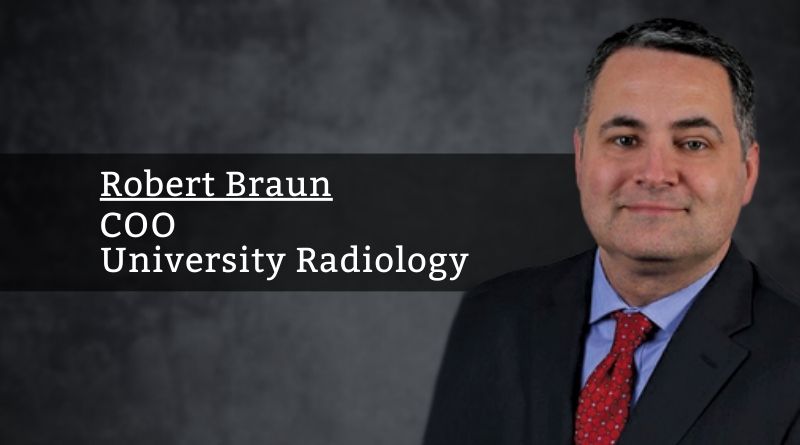Role of various technologies in radiology and how it is transforming the healthcare industry
By Robert Braun, COO, University Radiology
Healthcare is constantly changing at a rapid pace. One of the key medical disciplines promoting this change and advancement in medicine is radiology—aka diagnostic imaging. Specifically— this change is based on radiology’s advances in technological capabilities. Radiology is the discipline within medicine that uses imaging technology to diagnose and in some cases treat disease. Generally speaking, one can divide radiology into two large categories that include diagnostic radiology and interventional radiology. Interventional radiology is a therapeutic and diagnostic specialty that comprises a wide range of minimally invasive image-guided therapeutic procedures as well as invasive diagnostic imaging.
So where is all the advancement in radiology occurring? A significant focus of development is within the space of Artificial Intelligence or AI. Artificial intelligence in radiology has several goals that include improving quality, productivity, and automation. So what is AI and how can it be used in radiology? Artificial intelligence used within the space can be seen as a self-learning software that assists in identifying potential abnormal findings on images. This assistance has the ability to improve how quickly a study is interpreted by potentially identifying areas on the image which the radiologist (physician) can review to determine if the disease is present. The optimal end result is AI would assist in the quality of the interpretation and how quickly it can be interpreted—a win-win situation.
Advances in technology have long been a catalyst for change in radiology, this has facilitated the pace by which healthcare in general is evolving.
Nuclear imaging has also seen a significant resurgence within the specialty—with particular emphasis within the PET/CT space. Nuclear medicine is the subspecialty within radiology which uses radioactive material (radioisotopes or tracers) inside the body to see how organs or tissue are functioning or in some cases to target and destroy diseased tissue such as cancer. PET imaging or Positron Emission Tomography falls into this subspecialty of radiology. It is a scan that measures the physiological function of tissues by looking at blood flow, metabolism, neurotransmitters, and radiolabeled drugs. New radioisotopes which have recently been released have specific targeting capabilities to help diagnose, stage and monitor common diseases such as alzheimer’s and prostate cancer, both major illnesses impacting the lives of thousands of people.
As many readers will know, COVID-19 has had a significant impact on the business of healthcare—that includes radiology functions. With the help of the extreme measures early in the pandemic, alternative approaches to providing care while also social distancing needed to be implemented or augmented. Long before the pandemic, diagnostic radiology was already a pioneer in the telemedicine/radiology space with the ability for a radiologist to work remotely and read (interpret) diagnostic images via PACS (Picture Archiving and Communication systems). These systems receive diagnostic images from all imaging modalities such as Computed Tomography, Magnetic Resonance Imaging, X-Ray and so on. These images are sent via a secure network to the database for the images to be uploaded and then ultimately transferred. Radiologists view these images on a workstation and will often use software tools at their disposal to enhance their interpretation. The radiologists dictate a report with his or her findings and they are sent to the appropriate referring clinician. The data which comprise the images are ultimately stored and archived for future review or comparison if necessary.
Why is Teleradiology a hot topic if it has existed for many years now? When you combine the rise in imaging procedure requests, the diagnostic radiologist shortage occurring nationally and the reliability and efficiency in which teleradiology offers, you have a recipe for growth. This growth is accelerated with the specific rise in high-tech imaging such as CT, MRI or PET and allows for expanded access to subspecialty radiologists after normal operating hours for medical centers, private centers, and even rural centers. There is no shortage of vendors offering these platforms. One needs to wade through the abundant number of players in the marketplace to see if their platform meets your needs.
Advances in technology have long been a catalyst for change in radiology, this has facilitated the pace by which healthcare in general is evolving. Out of all the emerging and advancing technologies discussed, AI seems to be where the current spotlight is on. One can expect AI to continue its growth in the discipline as healthcare evolves to value-based arrangements and there is a continued emphasis on productivity, quality and superior outcomes.



